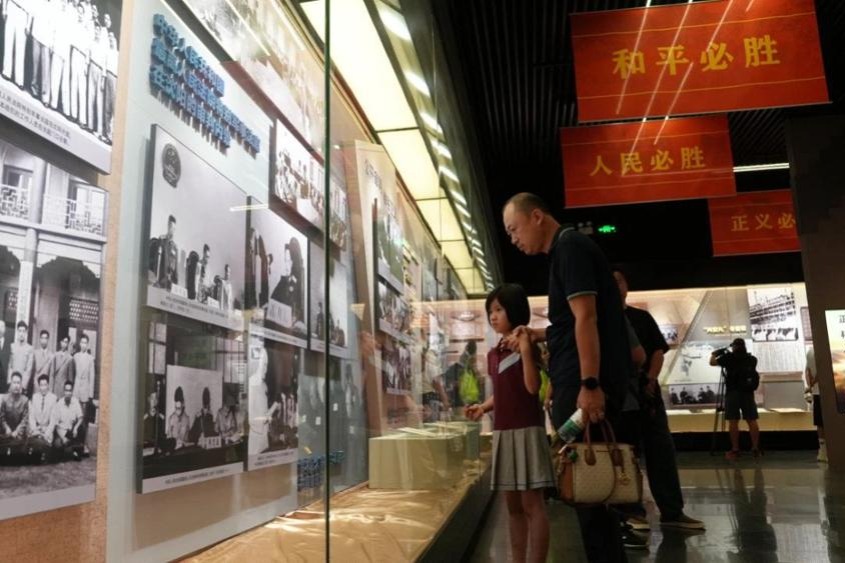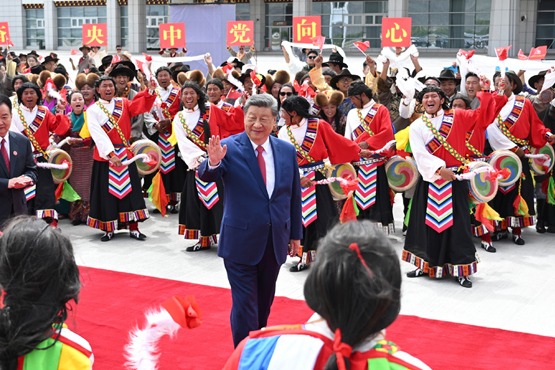Xiangyang, birthplace of rural reform

Visitors to Xiangyang town in Guanghan, Southwest China's Sichuan province, are impressed with its clean environment and numerous restaurants crowded with diners.
They would find it unimaginable that locals on this fertile land in the Sichuan Basin suffered from starvation from the late 1950s to the late 1970s.
It was due to a shortage of food that Xiangyang, then a people's commune, tried the household responsibility system in the late 1970s and became the first in China to abolish the commune in 1980, heralding the country’s rural reform.
Aimed at collectivizing China's agricultural economy, the people's commune was made a State policy in 1958 and lasted till 1983 when it was replaced by the township.
A household song in the 1950s has the line "communism is heaven while the people's commune is the bridge to it."
After China's first people's commune was set up in Suiping county, Central China's Henan province in April 1958, 26,000 communes mushroomed nationwide that year, with 120 million farmers becoming commune members.
A people's commune with 11,000 farmers and 700 hectares of land was set up in Xiangyang in July 1958. But agricultural output declined there in consecutive years from 1959 on. Food was in severe shortage and the number of people who died of malnutrition increased, according to the Guanghan county chronicles.
Because egalitarianism was rampant in the commune, farmers loafed on the job and were poor. From 1958 to 1976, the annual per capita money distributed from the commune to them only increased by 6 yuan ($0.9) -- from 68 yuan to 74 yuan.
To change the situation, leading officials in the commune Party committee held a secret meeting in June 1980, deciding to turn the commune into a township, said then-county Party chief Chang Guangnan.
Without any ceremony, the plate of the township replaced that of the commune on June 18, 1980, marking the beginning of China's rural reform, he said.
In October 1983, the Central Committee of the Communist Party and State Council issued a circular on the establishment of townships and communes gradually disappeared.
Before the withdrawal of the commune plate, Xiangyang residents had brought the wind of change, Chang said.
In the spring of 1977, farmers in a production team of the commune divided the ridges of the fields among themselves and planted rapeseed and soybeans, reaping a bumper harvest of the two plants that year.
Their success story prompted the Jinyu commune in Guanghan to start a household responsibility system in 1978 and the commune had an increase of over 2.5 million-kilograms of grain that year.
By the late 1970s, China's collectivization of agricultural production faced the challenges of a grain shortage. Some farmers began thinking about new ways of agricultural production, contributing to China’s rural reform.
Like their counterparts in Xiangyang, 18 households in Xiaogang village in Fengyang county, East China's Anhui province, came up with a new arrangement in 1978, where each household was responsible for their profits and losses of production.
In 1982, the Central Committee of the Communist Party of China announced the establishment of the household responsibility system for China's agricultural production, which was rapidly adopted nationwide and significant agricultural growth was witnessed.
In 1978, China's grain output was about 300 billion kilograms and it increased to 400 billion kilograms in 1984 thanks to the household responsibility system, said Du Runsheng, former director of the Administration of the Rural Development Research Center of the State Council.
Known as China's "father of rural reform," Du was one of the key people involved in China's rural reforms in the 1980s.
- Parade brings service members' dreams alive
- China activates Ningxia-Hunan power line
- Autonomous taxis drive Hainan's smart tourism
- Shenyang exhibit showcases historical justice
- Program aims to popularize awareness of disability prevention countrywide
- Death toll rises to 5 amid heavy rains in Inner Mongolia's Ordos





































